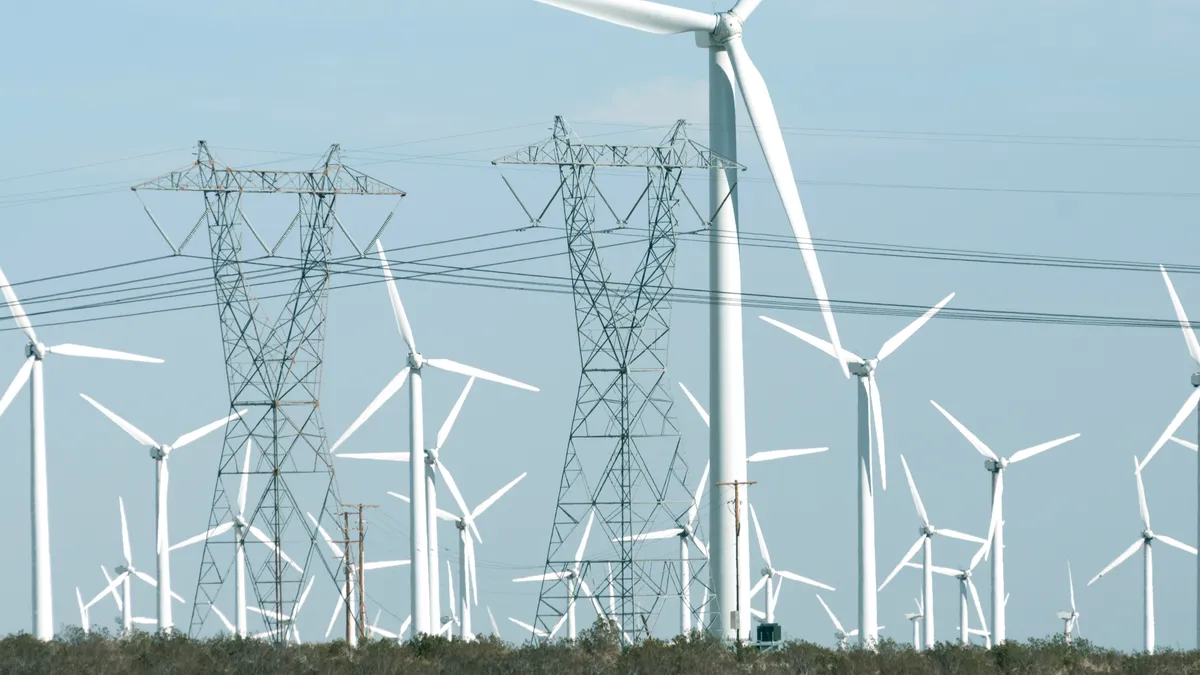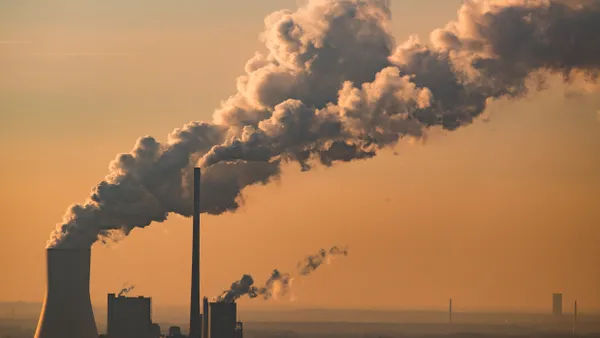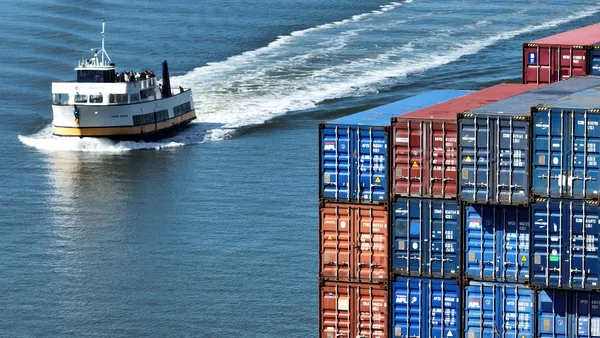Dive Brief:
-
The deployment of solar, utility-scale energy storage and electric vehicles is on pace to achieve the 37% to 42% emissions reductions expected to take place under the Inflation Reduction Act, according to a report from Energy Innovation, the Massachusetts Institute of Technology and the Rhodium Group.
-
Wind installations, however, are lagging behind modeled post-IRA scenarios, according to Anand Gopal, executive director of policy research at Energy Innovation.
-
Wind deployment may pick up on its own in the coming years, Gopal said, but is more severely impacted by transmission and supply chain constraints, which could limit its potential in the coming years.
Dive Insight:
The first full year since the passage of the Inflation Reduction Act has been something of a mixed bag for renewable energy and electric vehicles, Gopal said.
Energy Innovation, Rhodium Group and the REPEAT Project at Princeton University all independently modeled possible emissions scenarios under the IRA, and between the three studies put likely green house gas reductions in 2030 at 37% to 42% below 2005 levels.
In the intervening months, Rhodium Group and MIT's Center for Energy and Environmental Policy Research have tracked deployments in the real world, and so far, Gopal said, those deployments remain on pace with what the post-IRA modeling predicted. Solar installations and electric vehicle purchases in 2023 both track with projected outcomes, and deployment of battery storage has actually exceeded expectations, Gopal said.
But wind installations are something of a different story. Developers installed just 6.3 GW of wind capacity in 2023, down from 14.5 GW installed between 2020 and 2021. With 6.4 GW of new energy storage and 18.4 GW of solar, renewable energy developers will need to deploy 60 GW to 127 GW of renewable energy to stay on track with initial post-IRA projections, according to the Clean Investment Monitor by Rhodium Group and MIT.
Developers have 60 GW teed up for 2024, but they may not complete all these projects by the end of the year, according to the Clean Investment Monitor. And while solar looks set to grow, it's not likely it could pick up all the slack created by lagging wind installations, Gopal said. Even if it could, that wouldn't necessarily be a desirable outcome — the grid needs solar and wind's complimentary attributes to maintain reliability, Gopal said.
And while wind developers are showing an increased interest in repowering projects, Gopal and Trevor Houser, a partner at Rhodium Group, said they did not believe the margin of new capacity added through repowering would be enough to make up the difference. The Clean Investment Monitor data does not include additional capacity from repowering projects.
Gopal noted that the economics of wind development have been impacted by the limited availability of transmission in ideal locations for new projects, and by rising costs across the industry's supply chain, which relies more heavily on domestic manufacturing than solar or storage. Provisions supporting transmission development in the final version of the IRA were minimal, Gopal said, and may need to be supplemented by additional government action.
Gopal also noted that the better-than-expected performance of battery storage appears to be driven primarily by installations in California and Texas. Policies in those states could be responsible for their success, but Gopal said identifying specific policies for potential application on the federal level would require more detailed study.











